More on nanoprotection
In today's fast-evolving technological landscape, the term "nanodefence" has become increasingly commonplace. But what exactly does it mean?
In simple language, nanoprotection refers to a thin protective layer applied to the surface at the nanoscale level. Nanocoatings are designed to improve the properties of the material being applied to the surface, providing benefits such as increased durability, improved corrosion and scratch resistance and even hydrophobic or self-cleaning properties. The term 'nano' in the case of nanocoatings refers to the size of the particles or molecules used in the composition of the coating, typically between 1 and 100 nanometres. The application of nano-protection involves the use of nanotechnology to create a protective coating on a surface. Nanotechnology deals with materials and structures on a nanometre scale, which is incredibly small. Applying a nanocoating to a surface forms a thin, invisible layer that offers a number of advantages. One of the key properties of nanocaps is their ability to form a strong bond with the surface on which they are deposited. This bond ensures that the coating remains intact and provides long-term protection. Nanocoatings can be applied to a wide range of materials, including metals, glass, ceramics, plastics, rubber, concrete and even textiles. The nanocoating process can vary depending on the type of coating and the properties of the surface to be coated. In some cases the coating is sprayed onto the surface, in other cases it is applied with a brush. Regardless of the method of application, the aim is to create a uniform and thin protective layer that remains firmly on the surface. Nanocoatings can be tailored to specific requirements, for example to provide UV protection, to increase electrical conductivity or to improve heat resistance. This makes them suitable for a wide range of industries and applications, including automotive, electronics, aerospace, construction, cleaning and healthcare.
In the automotive industry, nanocoatings are often used to protect vehicle paintwork from scratches, UV radiation and environmental pollution. These coatings can provide a gloss or matt finish, depending on the desired aesthetic. In addition, nanocoatings can be applied to windscreens to improve visibility by repelling water and reducing haze. Nanocoatings can also be used to protect the interior and exterior plastic, rubber, leather and vinyl surfaces of cars, such as dashboards, seat covers, rubber mats, tyres, etc.
In the healthcare sector, nanocoatings are used to create antimicrobial surfaces that inhibit the growth of bacteria and other microorganisms. This is particularly important in medical devices where the risk of infection needs to be minimised. Nanocaps can also be used to create hydrophilic surfaces that facilitate the flow of liquids, making them useful in, for example, drug delivery systems.
Advantages of nanocap applications in cleaning products:
- Enhanced cleaning performance: Nanocoatings enhance the cleaning performance of traditional cleaning products. Nanocoatings repel dirt, grime and stains, making surfaces easier to clean and maintain in the future. This means less time and effort spent scrubbing and sweeping, and more time enjoying a clean and flawless environment.
- Long-term protection: nanocoatings provide long-term protection against dirt, moisture and other contaminants. This means surfaces stay cleaner for longer, reducing the frequency of cleaning and the need for harsh chemicals. In addition, the protective coating helps to prevent the build-up of bacteria and microbes, promoting a healthier and safer environment.
- Versatility: nanocoatings can be applied to a wide range of surfaces. The versatility makes them suitable for use in a wide range of cleaning products, such as sprays, wipes and even detergents. Whether on windows, worktops or fabrics, nanocoatings can provide an extra layer of protection.
- Environmental friendliness: Given the growing concern about the environmental impact of cleaning products, the use of nanocovers is a more sustainable solution. Reducing the number of chemical cleaning products and the need for frequent cleaning helps to reduce the release of harmful substances into the environment. This is not only good for the planet, but also provides a safer living and working environment for all.
Overall, nanocoatings offer many benefits and applications in various industries. A thin protective layer, invisible to the naked eye, improves the usability, durability and functionality of surfaces. Whether it's protecting automotive paintwork, improving the performance of electronic components or creating antimicrobial surfaces, nanocoatings play an important role in enhancing the properties of different materials.
NANO GO cleaners differ from other similar cleaners in that most are enriched with innovative nanocoatings and nanosilver. Therefore, NANO GO cleaners not only clean, but also provide nano-protection. Cleaning products containing nano-silver maintain the hygienic cleanliness of the surfaces to be cleaned, reduce the growth of microbes, fungi and mould and prevent unpleasant odours.
It is very important to note that both nano protectors and cleaning products should only be used for their intended purpose and following the recommendations on the product label or website. For example, nanocoatings for glass and ceramics are not suitable for concrete or car bodywork. The performance and durability of a nanocoating depends 99.9% on the correct surface preparation and application method!
All cleaners are different, so each cleaner has a defined use and application method. Although cleaners are safe for the surfaces to be cleaned when used for their intended purpose, their use outside their intended purpose may damage the surface to be cleaned. Therefore, the user is advised to familiarise themselves with the intended use and application method, carry out a compatibility test in a small area out of sight and then use the product.
For example, degreasers should not be used to clean leather or textile surfaces and glass cleaners will not remove rust stains. The degreaser should be rinsed or wiped off before drying, but the textile cleaner can remain on the surface until dry.
As with all other chemicals, the recommended personal protective equipment should be followed.
If you have any questions about the use of the products, please send us a message at info@nanogo.ee or write to us on Facebook messenger NANO GO Estonia.

